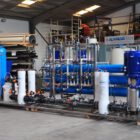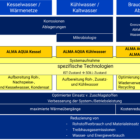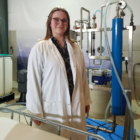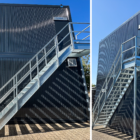Diaphragm valves are essential components in industrial water and wastewater treatment. They provide precise and reliable control of the flow of liquids and are characterized by their simple design, high chemical resistance and long service life. Due to these properties, they are used in numerous applications, including process water treatment, chemical dosing and sludge management.
This article describes the functionality, types and typical applications of diaphragm valves and provides an in-depth insight into their importance for water technology.
Table of contents
How diaphragm valves work
Diaphragm valves work according to a simple but effective principle. A flexible diaphragm separates the control component of the valve from the medium flowing through it. The flow is regulated by mechanical or pneumatic pressure on the diaphragm:
Closed: The diaphragm presses against the valve seat and blocks the flow.
Open: The diaphragm lifts off the seat, allowing the medium to flow unhindered.
Thanks to this design, the medium remains isolated from moving parts, which minimizes the risk of leakage or contamination.
Types of diaphragm valves
Diaphragm valves are available in various designs, each tailored to specific requirements:
1. manual diaphragm valves:
Features: Operation by handwheel or lever.
Area of application: Applications with low pressure and flow requirements.
2. pneumatic diaphragm valves:
Features: Control by compressed air, fast response times.
Area of application: Automated processes in water and wastewater technology.
3. electric diaphragm valves:
Features: Driven by electric motors for high precision.
Area of application: Precise dosing and control processes.
4. two-substance diaphragm valves:
Features: Additional protective layer for aggressive or abrasive media.
Area of application: Handling chemicals or solids.
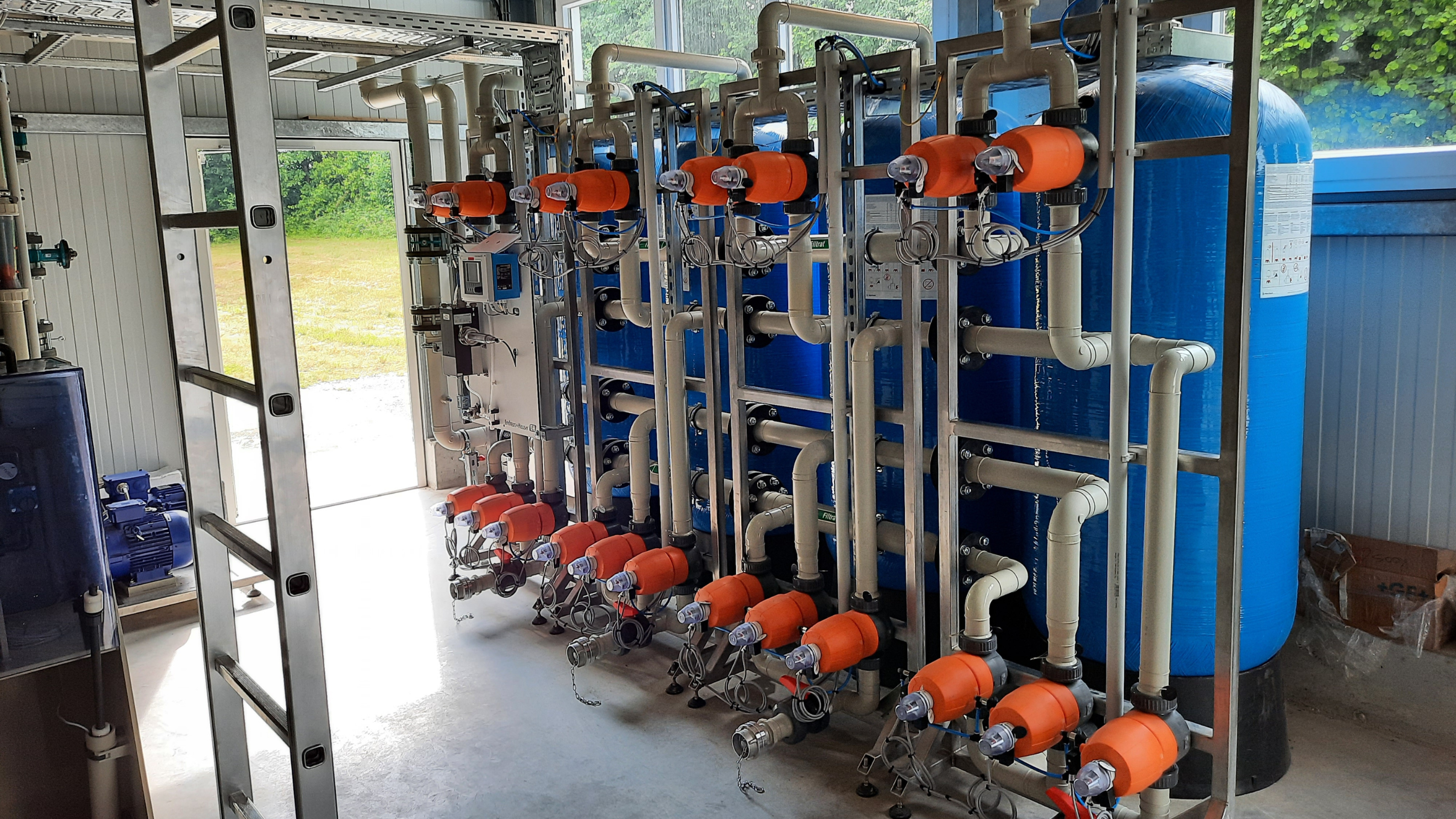
Photo: Our gravel and multi-layer filters (ALMA Fil) with pneumatically operated membrane valves
Materials and chemical resistance
The diaphragm and housing of a diaphragm valve are made of materials that are specially adapted to the chemical and thermal properties of the medium flowing through them:
Membrane materials:
EPDM: Excellent resistance to hot water and alkalis.
PTFE: Ideal for aggressive chemicals such as acids and solvents.
NBR: Good resistance to oils and greases.
Viton: High resistance to extreme temperatures and chemical attack.
Housing materials:
Plastics (PVC, PP, PVDF): Low weight and high chemical resistance.
Metals (stainless steel, Hastelloy): Mechanical strength and temperature resistance.
Advantages of diaphragm valves
1. tightness and leakage protection: The design without moving parts in the medium prevents leaks and ensures safe separation of the control unit and medium.
2. chemical resistance: diaphragm valves can safely control aggressive media such as acids, alkalis and abrasive slurries.
3. hygienic design: Thanks to their smooth surfaces and dead space-free design, diaphragm valves are ideal for applications with high hygiene standards, such as in the food and pharmaceutical industries.
4. long service life: Robust materials and easy maintenance result in high operational reliability and a long service life.
5. versatility: Diaphragm valves are suitable for a wide range of applications, from chemical dosing to the control of highly viscous media.
Typical applications of diaphragm valves
1. chemical dosing: Diaphragm valves enable precise control of the dosing of flocculants, precipitants, antiscalants and biocides in water and wastewater treatment plants.
2. process water treatment: In reverse osmosis and ultrafiltration, diaphragm valves are used to control pre-treatment and purification steps.
3. wastewater treatment: control of sludge liquids and aggressive wastewater containing abrasive particles or high pH values.
4. food and pharmaceutical industry: use in hygienically sensitive processes for controlling ultrapure water, process water and liquid products.
Challenges and solutions
1. material wear: Abrasive media can wear down the diaphragm and housing parts. The choice of high-quality materials such as PTFE or Hastelloy minimizes this effect.
2. chemical attacks: Aggressive chemicals can attack the membrane. The use of chemical-resistant diaphragm materials significantly extends the service life.
3. pressure fluctuations: Uncontrolled pressure fluctuations can impair the function of the valve. The integration of pressure control valves stabilizes operation.
Conclusion
Diaphragm valves are indispensable components in water and wastewater technology. Their versatility, chemical resistance and reliability make them the preferred choice for a wide range of applications. With the right choice of materials and designs, as well as regular maintenance, the efficiency and service life of the valves can be maximized.
For further information on our products, please feel free to contact us at any time!




